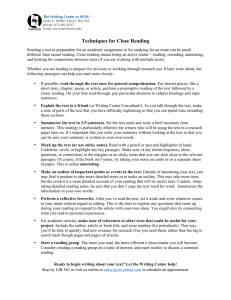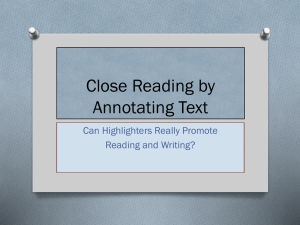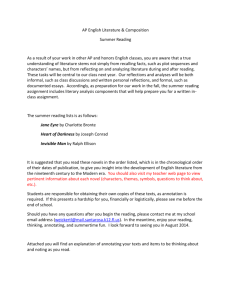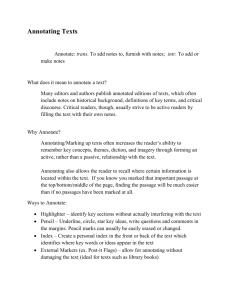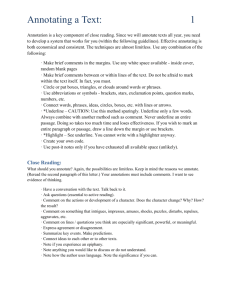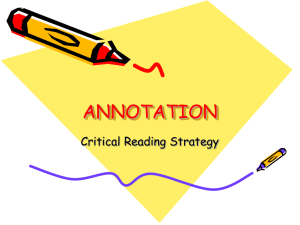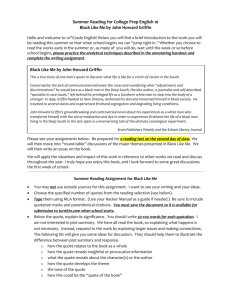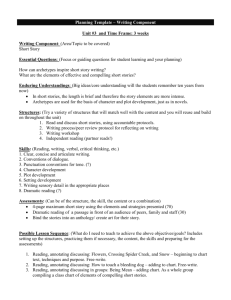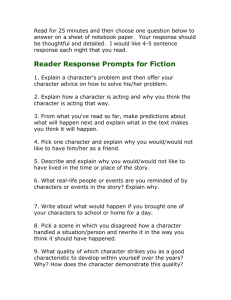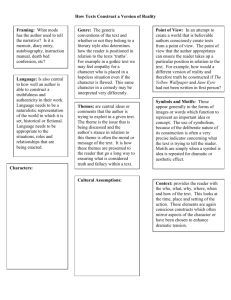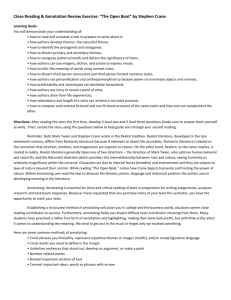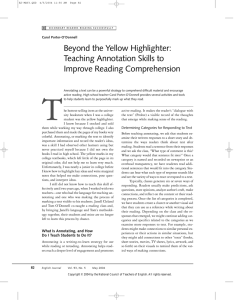Annotating Text
advertisement
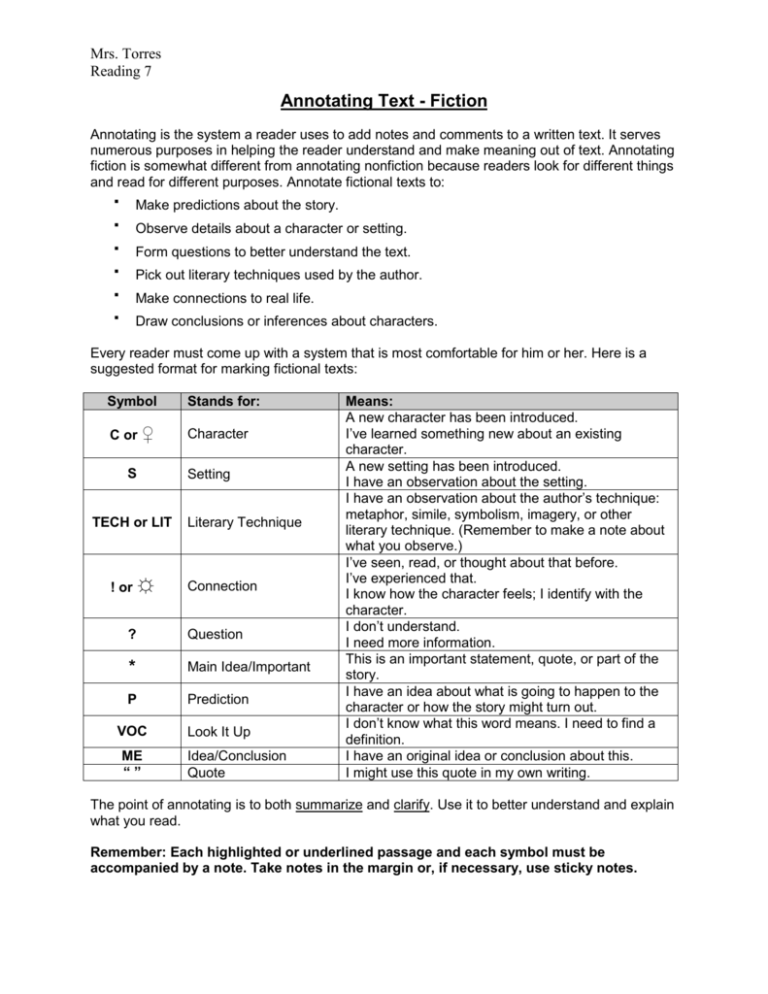
Mrs. Torres Reading 7 Annotating Text - Fiction Annotating is the system a reader uses to add notes and comments to a written text. It serves numerous purposes in helping the reader understand and make meaning out of text. Annotating fiction is somewhat different from annotating nonfiction because readers look for different things and read for different purposes. Annotate fictional texts to: Make predictions about the story. Observe details about a character or setting. Form questions to better understand the text. Pick out literary techniques used by the author. Make connections to real life. Draw conclusions or inferences about characters. Every reader must come up with a system that is most comfortable for him or her. Here is a suggested format for marking fictional texts: Symbol Stands for: C or ♀ Character S Setting TECH or LIT ! or ☼ Literary Technique Connection ? Question * Main Idea/Important P Prediction VOC Look It Up ME “” Idea/Conclusion Quote Means: A new character has been introduced. I’ve learned something new about an existing character. A new setting has been introduced. I have an observation about the setting. I have an observation about the author’s technique: metaphor, simile, symbolism, imagery, or other literary technique. (Remember to make a note about what you observe.) I’ve seen, read, or thought about that before. I’ve experienced that. I know how the character feels; I identify with the character. I don’t understand. I need more information. This is an important statement, quote, or part of the story. I have an idea about what is going to happen to the character or how the story might turn out. I don’t know what this word means. I need to find a definition. I have an original idea or conclusion about this. I might use this quote in my own writing. The point of annotating is to both summarize and clarify. Use it to better understand and explain what you read. Remember: Each highlighted or underlined passage and each symbol must be accompanied by a note. Take notes in the margin or, if necessary, use sticky notes. Mrs. Torres Reading 7 Annotating Text - Nonfiction Annotating is the system a reader uses to add notes and comments to a written text. It serves numerous purposes in helping the reader understand and make meaning out of text. Annotating helps to: Pick out main ideas and summarize. Form questions to better comprehend what I am reading. Make connections to things I already know. Draw conclusions. Create ideas for additional reading. Give me deeper understanding. Every reader must come up with a system that is most comfortable for him or her. Here is a suggested format for marking nonfiction texts: Symbol Stands for: Agree Means: I’ve seen, read, or thought about that before. I’ve experienced that. I don’t understand. I need more information. This is an important point the author is trying to get across. This is the author’s basic premise or overall meaning. I don’t know what this word means. I need to find a definition. I have an original idea or conclusion about this point. I agree with the author on this point. ! or ☼ Connection Disagree I disagree with the author. I think otherwise. Quote I might use this quote in my own writing. ? Question * or ! Main Idea VOC Look It Up ME + “” Idea/Conclusion The point of annotating is to both summarize and clarify. Use it to better understand and explain what you read. Remember: Each highlighted or underlined passage and each symbol must be accompanied by a note. Take notes in the margin or, if necessary, use sticky notes.
